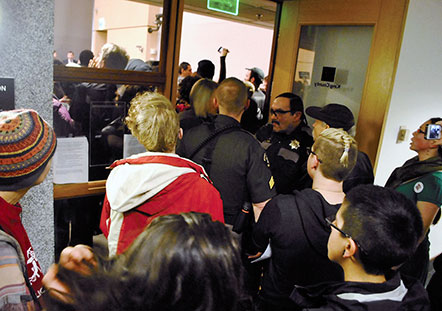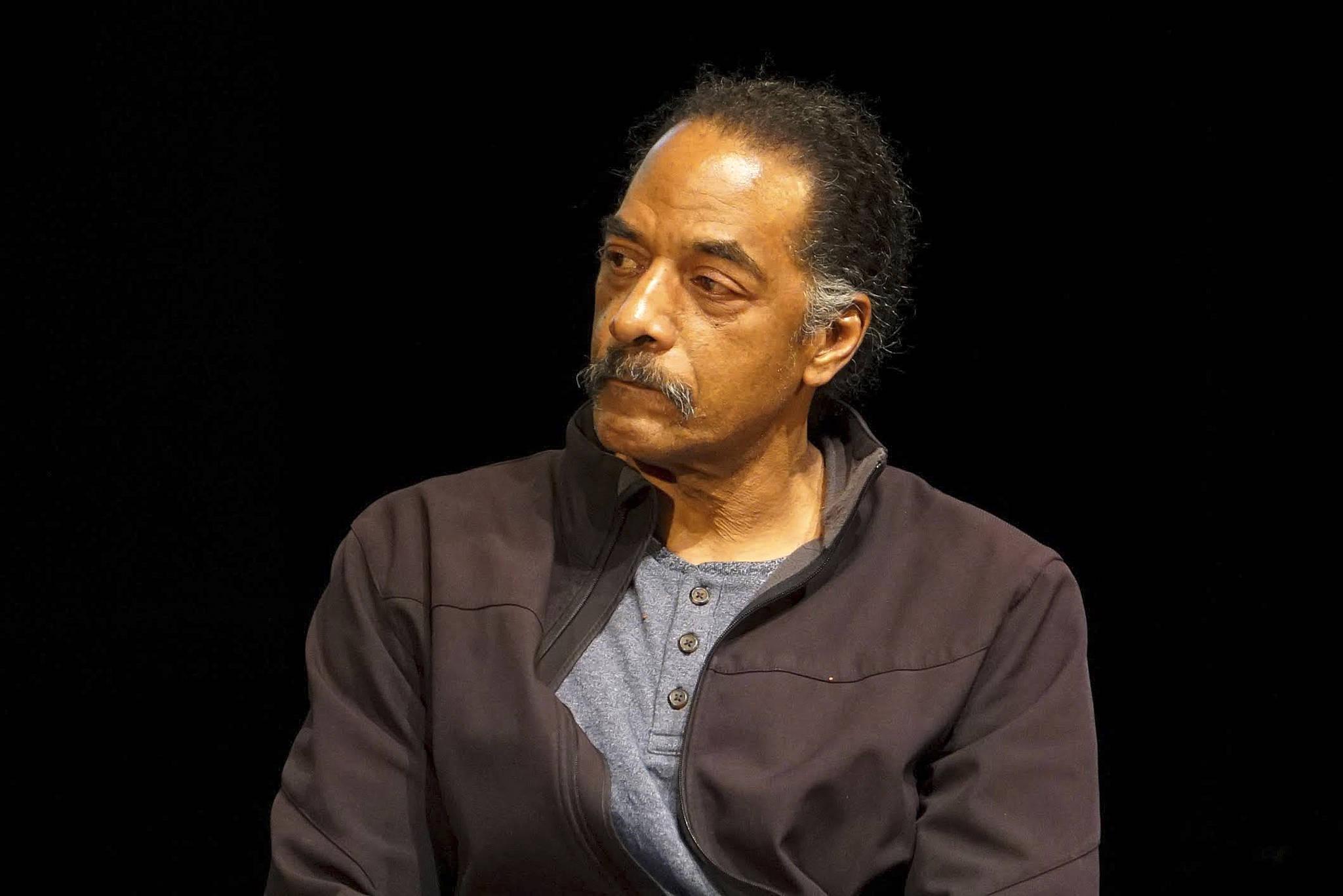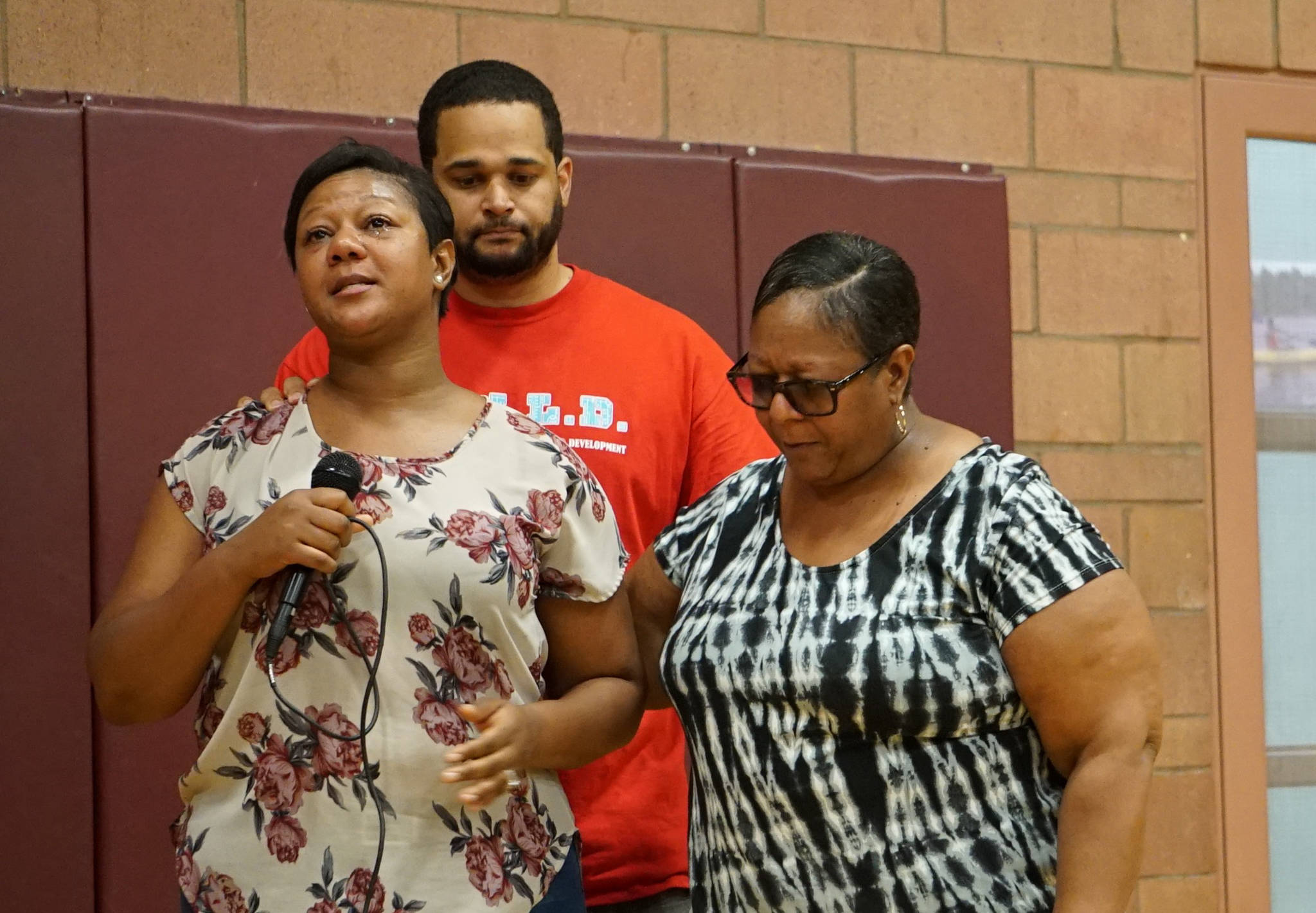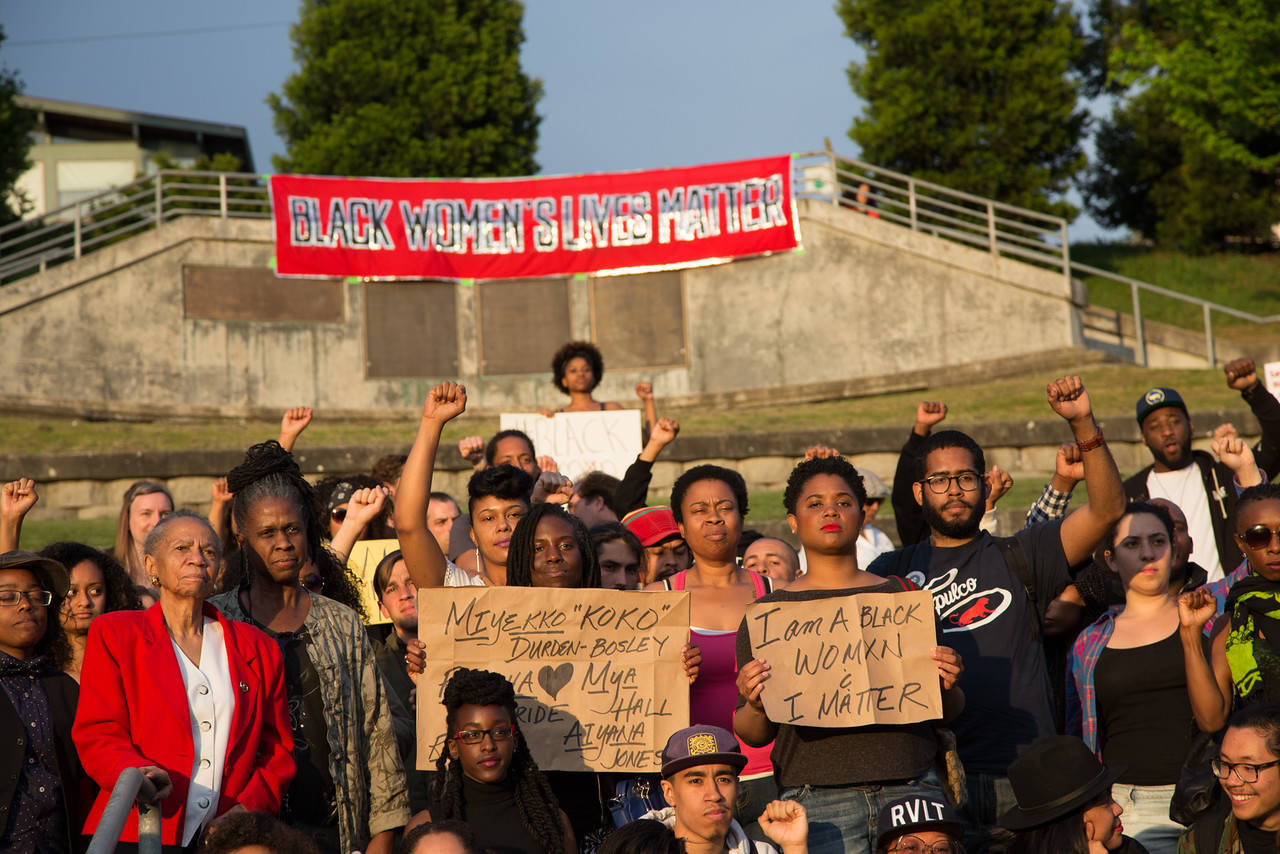The opposition states its case before the King County Council. Photo by Celia Berk
Two years of protests, countless public hearings, and canvassing from neighborhood to neighborhood appeared to culminate last week in a contentious King County Council meeting as opponents of the county’s proposed new juvenile detention center were dealt a seemingly fatal blow.
On February 9, hundreds of those opponents flooded the Council’s chambers on the 10th floor of the King County Building to denounce the future $210 million King County Children and Family Justice Center, to them a shrine of a brutal and broken juvenile-justice system desperately in need of repair. For six hours, community members delivered fiery public testimony accusing Council members of racism. At one point, activists declared a “people’s filibuster” and took turns reading from Angela Davis’ famous screed Are Prisons Obsolete?
Then, at the conflict’s nadir, a Council member called in the police to arrest one speaker for going over his two-minute limit for public testimony. Twenty-five Seattle and King County officers entered the chamber as protesters formed a halo around the speaker to prevent his forceful removal. He was eventually allowed to remain. But it was a minor victory in what would become a major defeat. In the end, Council members voted unanimously (7-0) to approve a design-build contract with developer Howard S. Wright and designers Integrus Architecture for a new building that in 2019 will replace the current detention facility at 1211 E. Alder St.
The vote was the latest chapter in a prolonged duel between the county and adversaries of the detention center. Opposition has rallied in large numbers at nearly every stage of its development: public hearings held by the county prior to its appearance as a ballot measure in 2012; this summer’s Seattle City Council land-use meetings, at which the county sought and received amendments to existing land-use codes; and the most recent contract-approval vote.
Detention-center opponents view the facility as a malicious extension of what they call the prison-industrial complex: a network of government, media, criminal-justice systems, banks, and corporations that economically, professionally, and politically benefit from the mass incarceration of the poor and people of color.
“No one on the county could ever argue that the new jail is not an expansion of the [prison-industrial complex]. The PIC is modern slavery,” said a disappointed Dustin Washington of the American Friends Service Committee, talking to Seattle Weekly by phone later in the week. “They might have won this racist vote, but history and the community will ultimately judge them.”
Washington, who has been at the forefront of opposition to the center, wants it to be known that the movement goes far beyond just one building. He also contends that the vote, while deflating, serves not as an end but a start to the next phase of that movement.
“Prison buildings are often lobbied for by corporations, construction companies, architects, [and] prison-supply companies, while people of color fill the prisons. That is part of a systemic problem, and we all know that can’t be destroyed in one day. They couldn’t have thought we would admit defeat after one vote,” says Washington.
The legislation the Council adopted last week puts the county on the hook for $154 million, solidifying its commitment to the facility, which was put into motion in August 2012 when 53 percent of King County voters passed a nine-year property-tax levy that provided the $210 million for its construction.
With construction all but assured, the question now is what will become of the energy generated by what detractors have come to call the “new youth jail”? There has been disagreement about how this energy should be directed, even before the vote.
“I don’t doubt their intentions, but at this point, continuing to protest against the prison is wasted energy and could be focused on other issues that impact youth,” asserted councilmember Kathy Lambert following an earlier vote by the City Council to grant the county a master land-use permit.
“All but one member of the council is white,” a furious Washington replied at the time. “Their children aren’t going to be affected by this. It is the height of arrogance for Kathy Lambert to suggest what we should do for our liberation. She is the most glaring example of a paternalistic liberal racist.”
Contrary to Lambert’s assertion, several organizers believe that their efforts have been anything but in vain. At the root of the community protests is the larger issue of inequity in the nation’s and county’s prisons. Activists cite the county’s own data that reveals that as of 2012, 42 percent of the juveniles incarcerated in Washington’s most populous county were black, even though blacks account for only 7.7 percent of the general population—noting that this figure is almost identical to the national average (43 percent), belying our region’s claim as a bastion of progressive values.
“This isn’t going away,” asserts James Williams, a member of the group Ending the Prison Industrial Complex (EPIC). “This is about structural, systemic racism, and it has been about that from the moment the county voted to build this prison and then sell it to the general public as a Disneyland fun center instead of an actual prison.”
The county has asserted that the new building is a necessity, given the deplorable conditions of the current facility—leaky pipes, brown tap water, and freezing temperatures that make medieval torture chambers appear favorable by comparison—and believe opponents have picked the wrong target to lash out against.
“[The new building] will replace outdated facilities which are broken, overcrowded, and unsafe,” King County Council Chair Larry Phillips said via e-mail. “I support the construction contract to start building a new center, including new courtrooms, space for an alternative school, and access for families to needed social services in addition to limited detention facilities. While I support replacing this dilapidated structure, I also agree wholeheartedly that prevention—not detention—is the best tool for dealing with crime.”
Phillips claimed some success on this last item, noting that the youth incarceration rate has dropped by two-thirds in the past decade. Yet, this accomplishment rings hollow in the minds of the center’s opposition, which is eager to point out that over the last 15 years, the disproportionality between youth of color and whites in the system has steadily grown, per county data.
Activists have gotten
busy organizing a slew of actions to counter the latest milestone in the center’s advancement. They will host a “people’s tribunal” on March 28 at Seattle University that “will place the entire juvenile-justice system on trial.” It will feature firsthand testimony from black youth decrying King County’s incarceration system along with panelists proposing solutions for its repair.
Organizers will also lay out plans for an alternative building. Calling it a “holistic restorative justice center,” their vision is of a community-run building that replaces prison guards with “healing workers” equipped with a better understanding of race. It would eschew punitive approaches for “truly rehabilitative” ones. “Our center would address the severe emotional, physical, and spiritual trauma kids in the juvenile-justice system often face but never resolve,” says Washington.
The tribunal will follow a series of teach-ins that will seek to explore the relationship between the prison-industrial complex and the detention center. The first of these will take place this Sunday at Madrona Grace Presbyterian Church.
With disappointment from last week’s vote rapidly dissipating, organizers continue to recruit to their swelling cadre—an eclectic mix of anti-prison activists, white anti-racist groups, clergy from multiple faiths, taxpayer advocates, and lay citizens increasingly alarmed at the racial composition of the county’s juvenile prison population.
“I’m sure the county would love for us to fall back asleep and admit defeat, but we’re not quitting,” proclaims Senait Brown, another member of EPIC. “This fight against the prison will only be over when we’ve won. At the end of the day we’re going to change how juvenile justice is done in King County forever.”
news@seattleweekly.com
Follow Marcus Harrison Green’s continuing coverage of the King County Children and Family Justice Center at southseattleemerald.com.








